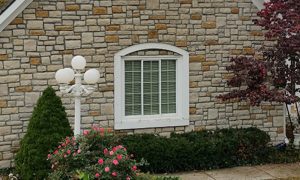Limestone or Sandstone
 Both limestone and sandstone are created organically with their own unique pattern and color. Using these two natural elements will give you a unique look to your design. They both insulate thermally and acoustically giving you both energy savings and comfort from noise. A homeowner cannot go wrong with either stone.
Both limestone and sandstone are created organically with their own unique pattern and color. Using these two natural elements will give you a unique look to your design. They both insulate thermally and acoustically giving you both energy savings and comfort from noise. A homeowner cannot go wrong with either stone.
These stones are both used in many designs such as landscaping, decorative pavers for patios, walkways and facing and coping. Both give the same look but do have different properties and compositions.
Limestone is formed by a number of natural processes including the settling of calcium deposits in subterranean caves, as well as from the slow compression of fossilized coral, shells and microorganisms. It is a fine-grained stone in earthy colors, white and dark brown. Limestone itself is mostly made up of calcite which gives the stone a fine chalky texture. Calcite can make limestone weak to acids so this might not be the best choice for pool surrounds.
Sandstone is formed from sand-sized particles and comes in many more colors than limestone. These colors include a wide range of gold, pink, earthy brown and grey. Over time sedimentary rock settles and compresses into sandstone. Sandstone is mostly made up of quartz and felspar but also can contain fragments of other kinds of rocks. The quartz gives sandstone a sparkling effect in the sunlight and makes the material stronger than limestone. The density of the stone makes it strong under heavy pressure and is more resistant to heat and impact than limestone.
You can’t go wrong with either stone but you need to make sure you choose the one that is right for you. If you are using a stone for a driveway, then sandstone would be a better option for its durability, but if you want a smooth walkway limestone is a right choice.
